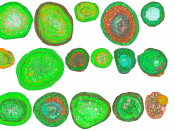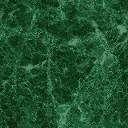Bauxite is a naturally occurring, heterogeneous rock which contributes the greatest towards the production of the element, aluminum. There are however various igneous rocks which contain high concentrations of aluminium oxide but bauxite is financially more efficient due to it being far cheaper to extract the aluminium oxide.
The principal minerals in bauxite are gibbsite (Al(OH)3), boehmite (AlO(OH)) and diaspore, which has the same composition as boehmite, but is denser and harder (7). There's also the presence of impurities. These may include the iron oxides hematite and goethite, the clay mineral kaolinite (Al2Si2O5(OH)4) as well as small amounts of Anatase which are a form of titanium dioxide. The largest Bauxite location in Australia is in Weipa, Queensland and is considered as the pisolitic-nodular surface blanket type (1). This is due to the bauxite being in the form of small, rounded masses known as bauxite pisolites (1). The formation of Bauxite in Weipa was a combination of weathering as well as erosion.
It begins with the constant precipitation and drying of the top few metres of the ground surface, a form of weathering. This causes a decrease in easily soluble elements such as Sodium and Calcium and as a result, there's an increase in the concentration of the more insoluble element Aluminium along with various other insoluble 'imperfections'. This forms a ground surface known as laterite (1). Also, due to Weipa having such a flat ground surface erosion by both wind and water occurred easily without the disturbance of obstacles (mountains, various land formations). As a result, a lot of the ground surface, including bauxite pebbles, would have been transported into the adjacent Gulf of Carpentaria where the formation of bauxite will repeat once more. Such types of bauxite similar to the Weipa kind are also found in countries such as...


